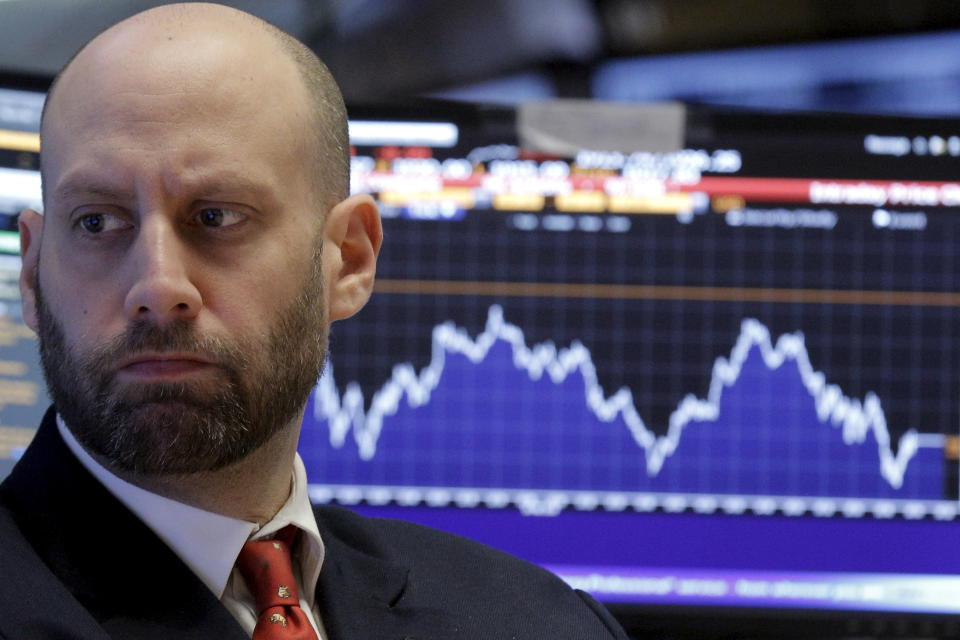Dow loses 4% on Thursday in second 1,000-point tumble of the week
For the second time in a week, the Dow Jones Industrial Average lost 1,000 points in a single session.
In what’s been a historically volatile week for markets, each of the major U.S. averages lost more than 3.7% in trading on Thursday with the Dow’s 4.15% decline — which was good for a 1,032-point loss — leading markets lower.
The benchmark S&P 500 lost 100 pints, or 3.75%, while the tech heavy Nasdaq lost 274 points, or 3.9%.
Bespoke Investment Group notes that both the Dow and the S&P 500 are officially in correction territory, defined as a 10% drop from recent highs, as the Dow settled at 23,860.46 and the S&P 500 closed at 2,581. The Nasdaq, which closed at 6,777.16, closed about 20 points above its correction level.
On Monday, the Dow lost 1,175 points, its largest point-decline on record before gaining 560 points on Tuesday in a snapback rally.

Thursday’s market decline appeared once again tied to the increase in interest rates, with the 10-year Treasury yield touching 2.86% as investors continue to work out what a rising interest rate environment means for stocks after nearly a decade of low, stable interest rates and low inflation. After bond yields fell as stocks sold off during late morning trade, rates eventually moved higher, the opposite of what investors usually expect from bonds amid a stock market decline.
As we noted Wednesday, however, tech stocks fell more than the broader market and some analysts have pointed to these market leaders — Alphabet (GOOGL), Facebook (FB), Microsoft (MSFT), Amazon (AMZN), and Apple (AAPL) — as potential indicators of markets having not yet worked out all the stress inflicted in the 8% S&P 500 decline that happened in just a handful of trading days.
Among these companies, only Apple held up better than the broad market on Thursday. Each of the other four major tech giants lost more than 4.5%.
The VIX, which tracks market volatility, shot higher on Thursday, reflecting continued anticipated stresses in markets. The surge in volatility on Monday, which sent the VIX spiking to multi-year highs in just hours, led to the implosion of products designed to bet against volatility, exacerbating markets stresses in a rapid unwind. 2017, you’ll recall, was one of the least-volatile years on record.
Wrong-footed volatility bets, and not the notion that too much good economic news was rejected by financial markets, has become the dominating theory behind why markets tanked on Monday. The unsettled nature of markets since Monday shows investors have still not sorted out what this means going forward.
Wall Street strategists, however, remain steadfast in their view that the recent declines in the stock market do not mark the end of the bull market run we’ve seen since the financial crisis, and which accelerated in 2017.
Strategists led by James Barty at Bank of America Merrill Lynch wrote Wednesday that, “In our view markets had gone too far too fast two weeks ago and the correction is merely an unwind of very overbought conditions.”
—
Myles Udland is a writer at Yahoo Finance. Follow him on Twitter @MylesUdland
Read more from Myles here:
One candidate for Amazon’s next headquarters looks like a clear frontrunner
Tax cuts are going to keep being a boon for the shareholder class
Auto sales declined for the first time since the financial crisis in 2017
Foreign investors might be the key to forecasting a U.S. recession
It’s been 17 years since U.S. consumers felt this good about the economy

